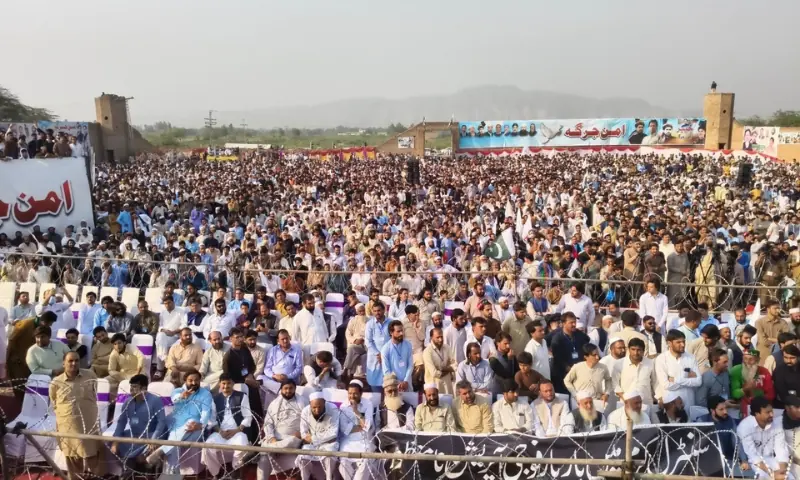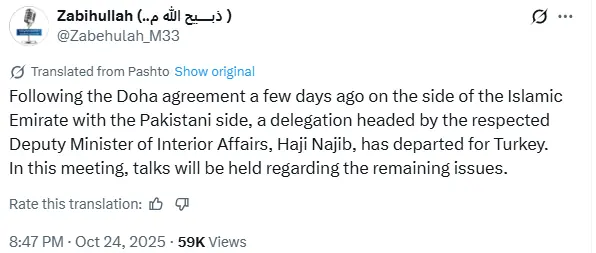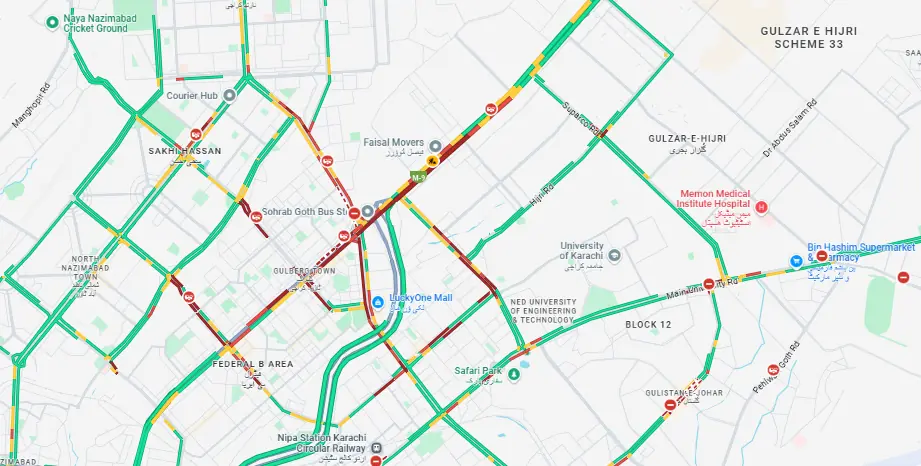The Pakistan Airports Authority (PAA) on Saturday announced changes to certain routes for the Karachi and Lahore flying regions for next week to ensure “continued safety and effective air traffic management”.
“The restrictions are effective from Tuesday, October 28, 2025 at 5:01 am Pakistan Standard Time (PKT) and will remain in effect until Wednesday, October 29, 2025 at 9 am PKT,” said a NOTAM (notice to airmen) issued by the PAA today. “This is a routine operational safety matter. The measure is being implemented for ‘operational reasons’ to ensure continued safety and effective air traffic management.”
In a separate development, open source tracker Damien Symon, also cited by Reuters in previous news reports, said Indian aviation authorities issued a NOTAM a day earlier “possibly for a military exercise/weapons test as India prepares for its cross-border Tri-Services exercise.”
The open source tracker claimed that India had also issued a NOTAM for a tri-service exercise along its western border with Pakistan from October 30 to November 10, saying “the area chosen and scale of activity is unusual.”
A map he shared showed the exercise area stretching from around the Indian city of Jaisalmer in Rajasthan to the disputed Sir Creek swamp area.
The creek area has been a point of contention for decades between the two nuclear-armed neighbors, and talks over the maritime boundary dispute have been inconclusive so far.
Indian media First message He also reported that NOTAM was for a “large-scale tri-service exercise” along the border with Pakistan “amid rising tensions following Operation Sindoor.”
He added that the exercise will involve all three branches of the Indian Army and aims to demonstrate the country’s “growing joint operational capabilities, self-reliance and innovation.”
It quoted the Indian Ministry of Defense as saying that “Southern Command troops will be actively engaged to validate joint operations in diverse and challenging terrain, including offensive maneuvers in the creek and desert sectors, amphibious operations off the coast of Saurashtra and joint multi-domain operational exercises covering Intelligence, Surveillance and Reconnaissance (ISR), Electronic Warfare (EW) and Cyber. capabilities.”
CNBC-TV18 reported that, according to officials, the exercise underscores India’s commitment to improving interoperability between its armed forces while “strengthening readiness for future combat scenarios.”
First message reported that Indian Defense Minister Rajnath Singh had visited soldiers in Jaisalmer, Rajasthan, on Thursday and claimed that Operation Sindoor had “sent a strong warning to Pakistan, which would now ‘think twice before attempting any misadventure against India’”.
India today reported that he had also visited the Bhuj military station in Gujarat on the same day and warned Pakistan against any action in the disputed Sir Creek area.
“If Pakistan dares to act in the Sir Creek sector, the response will be so strong that it will change both history and geography,” the media quoted him as saying.
We know how to defend every centimeter of our maritime borders: naval chief
Separately, a Pakistan Navy press release said Chief of the Naval Staff Admiral Naveed Ashraf visited forward posts in the creek areas to review operational readiness and combat readiness.
The naval chief said sea lines of communication (SLOC) and maritime security were not just a military requirement but a “cornerstone” of the nation’s sovereignty and a “vital pillar” of economic prosperity and stability.
He highlighted that the PN Navy was the “vanguard of peace and stability” in the Indian Ocean and an “important player” in regional maritime security.
“We know how to defend our sovereignty and every inch of our maritime borders from Sir Creek to Jiwani,” he added.
He also reaffirmed to the nation that the navy’s defense capabilities were “as strong as our unwavering morale, from shore to sea.”
During the visit, three state-of-the-art 2400 TD hovercraft were also inducted into the Pak Marines, marking a “significant step” in modernizing the navy’s operational capabilities.
“The newly inducted hovercraft are capable of operating simultaneously over a variety of surfaces, including shallow waters, sand dunes, marshy and marshy littoral areas, and can navigate in areas where traditional vessels are not suitable or designed to operate. This unique capability of carrying out simultaneous operations over land and sea provides an advantage to the Pak Marines in the performance of their assigned tasks. It will also strengthen PN capabilities for an effective and decisive response against all adversaries.
“Addressing the officers and men on the occasion, the naval chief highlighted that the installation of these new platforms symbolizes the vision of the PN to modernize and reaffirm the unwavering resolve to strengthen the defense of the country’s maritime borders, the coastal strip, particularly the creeks area.”
Tensions between Pakistan and India
Earlier this week, US President Donald Trump claimed that he and Indian Prime Minister Narendra Modi had a phone call in which they discussed “not having wars with Pakistan.”
The US president has repeatedly taken credit for ending the conflict between Pakistan and India earlier this year in May. India has denied the claim that the US president was responsible for mediating the ceasefire through trade threats. Meanwhile, Prime Minister Shehbaz Sharif praised Trump for his “leadership and proactive role” in helping the two neighbors achieve peace in the region.
Tensions between India and Pakistan rose sharply in early May 2025 after an attack in Pahalgam in Indian-occupied Kashmir prompted New Delhi to launch “Operation Sindoor” on May 7, targeting sites inside Pakistan and causing civilian casualties.
India blamed Pakistan without providing evidence, further inflaming hostilities between the two nuclear-armed neighbors. Pakistan subsequently launched a retaliatory “Operation Bunyanum Marsoos,” which led to exchanges of heavy artillery and drones before a U.S.-led offensive helped broker a ceasefire.
Since then, Indian political and military leaders, including heads of military branches, have continued to make aggressive statements, repeating accusations of terrorism that Pakistan has repeatedly refuted and also warning of “geographical shifts” in the course of any future conflict.
Singh had also said on May 30 that India would use its navy’s firepower in response to any future aggression by Pakistan. Reuters reported.
The Pakistani military has dismissed claims as if India was trying to “shape history to its liking by inventing outlandish Bollywood-style scripts” after the May conflict, while issuing its own warnings that any “imaginary new normal” Indian leaders might consider about bilateral dynamics would be met with a “new normal of rapid repressive response.”
“In the face of highly provocative statements by the Indian Defense Minister and his army and air chiefs, we warn that a future conflict could lead to catastrophic devastation. Should a new round of hostilities break out, Pakistan will not stop. We will respond resolutely, without any scruple or restraint,” the military had said in early October.








